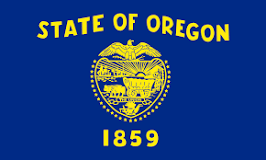PORTLAND, Ore. (PORTLAND TRIBUNE) — Members of two state boards are floating the idea of a statewide bond issue to deal with the $22 billion in unfunded liabilities of Oregon’s public pension system over the next decades.
Members of the Public Employees Retirement System board and the Oregon Investment Council discussed the concept at a joint meeting Friday, Oct. 1, although only the Oregon Legislature can propose and Oregon voters approve such a measure.
“What is important is that we are dealing with the liability up front,” said Lawrence Furnstahl, a PERS board member and chief financial officer of Oregon Health & Science University, who advanced the idea.
He said relatively low interest rates and the state’s current bond ratings make the idea worth exploring.
“We are just throwing some ideas out,” said John Thomas, PERS board chairman. “Our two boards are not going to be able to address the problem.”
The discussion took place after the PERS board approved sharply higher contribution rates for the more than 900 participating government employers in the pension system for the next two years, starting in mid-2017.
The higher rates will result in less money available to state and local governments for pay and other employee benefits, and for general services to the public.
But those rates do not reflect the full increase in future liability, even as employer contributions jump from $2 billion in the current cycle to $2.9 billion in 2017-19. Part of that increase will be spread over two more budget cycles, through 2023, through a practice called “rate collaring.”
“Right now we just keep piling on our credit card,” said Rukaiyah Adams, Oregon Investment Council vice chairwoman and chief investment officer for the Meyer Memorial Trust.
Gov. Kate Brown issued a statement after Friday’s discussion:
“We all should be willing to consider creative and responsible ideas that are likely to withstand legal challenge and would help us reduce and manage this unfunded liability.
“Paying it down won’t be easy, but I will continue to work with the PERS Board, OIC, as well as the Legislature to fund a fair, responsible, and affordable retirement system for our teachers, firefighters, law enforcement, and other critical service providers, and for taxpayers and employers throughout Oregon.”
The problem
Back in 2003 — after lawmakers overhauled the public pension system to provide for less generous benefits for newly hired employees after August 2003 — they proposed and voters approved $2 billion in bonds to cover part of state government’s future pension obligations.
PERS spokesman David Crosley said the size, scope and purpose of any new bond issue would differ from the 2003 measure.
A legislative task force is considering further changes in the system.
But the Oregon Supreme Court has ruled that benefit changes cannot be made retroactive, so lawmakers cannot tinker with the more generous benefits for those hired before the 2003 overhaul.
The system has 130,000 retirees, who account for 64 percent of liabilities, and still-active public workers hired before August 2003 account for 25 percent. Just under half of Oregon’s 200,000 public workers, however, fall under the post-2003 system.
Oregon’s projected public-pension liability has grown to $22 billion, largely because of a 2015 decision by the Supreme Court that barred retroactive reductions in cost-of-living increases to retirees.
Also, retirees are living longer than had been forecast, and investment earnings on the $70 billion fund — while better than comparable funds nationally — have fallen short of the assumed rate of return set by the PERS board.
So the system’s funded status dropped from 96 percent at the end of 2013 to 79 percent at the end of 2015 — and the numbers are even lower if the set-asides by state governments and others for future pension liabilities are subtracted.
Investment earnings, which account for seven of every $10 paid in pension benefits, have accumulated at a rate of 4.8 percent for the first eight months of 2016 — still short of the assumed rate of 7.5 percent.
“It is not possible to earn our way out of this problem,” said Katy Durant, Oregon Investment Council chairwoman, who will be leaving after 12 years on the board that oversees state investments.
Rex Kim, a new member of the council, said the problem of lagging investment earnings would remain even if lawmakers proposed and voters approved a massive bond issue to cover pension liabilities.
Candidates weigh in
During a separate discussion last week at a business-sponsored forum at the Monarch Hotel in Clackamas, the three leading candidates for state treasurer offered their ideas.
The treasurer is one of five voting members of the Oregon Investment Council, which oversees investments and the $70 billion PERS fund. A separate agency manages the pension system.
Democrat Tobias Read and Republican Jeff Gudman agreed that some savings could be obtained if lawmakers shifted some investment management from outside financial consultants to in-house staff in the state treasury.
“That can add up to significant savings over the next decade,” said Read, a Democratic state representative from Beaverton who sponsored such a bill in the 2015 session on behalf of the current treasurer, Ted Wheeler.
But Chris Telfer, the Independent Party nominee and a certified public accountant in Bend, was dubious.
“I have yet to see anything the state can do better than the free-enterprise system,” said Telfer, a former Republican state senator.
Acknowledging that higher state investment earnings are unlikely to make up the gap in pension liabilities, Telfer said she still favored directing low-yielding investments into housing.
Gudman used his time to attack Read for support of the corporate tax increase in Measure 97: “It is a PERS bailout.” But the Lake Oswego city councilor also said he favors reducing the annuity and inflation rates for the pension system.
Cost-of-living increases are already capped at 2 percent annually, and although they cannot be retroactive, legislative reductions apply to cost-of-living increases on some benefits earned after mid-2013.
http://koin.com/2016/10/03/bond-idea-floated-to-fund-growing-pension-needs/


